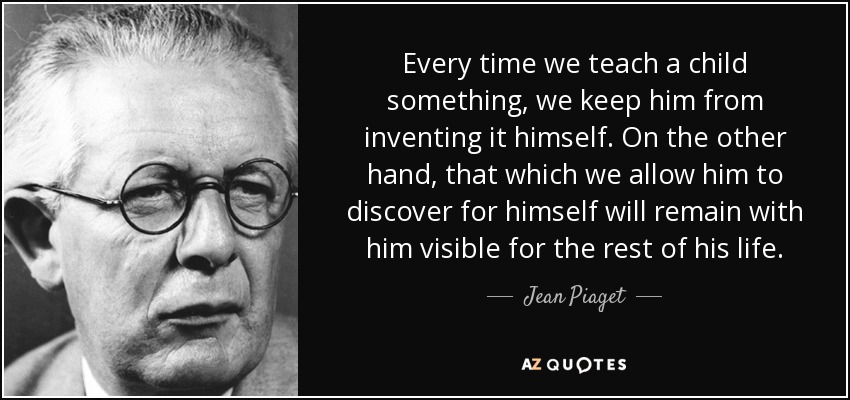Constructivism
Hello (for the 2nd time this week) dear readers!
Today’s post will be about a topic we have already dealt with (Constructivism), however, it is going to be solely focused on Constructivism and nothing else. I’ll bring a more meticulous reflection and analysis of this educational philosophy, so please read until the end and leave a comment. 🙂
“What radical constructivism may suggest to educators is this: the art of teaching has little to do with the traffic of knowledge, its fundamental purpose must be to foster the art of learning.” - Ernst von Glasersfeld
As mentioned above, Constructivism is an educational philosophy that suggests that learners actively construct their own understanding and knowledge of the world based on their experiences and interactions with their environment. It is a student-centered approach that emphasizes the importance of students’ prior knowledge, active participation, and personal meaning-making to promote deep and meaningful learning.
In a constructivist classroom, teachers serve as facilitators or guides who support students’ learning by asking thought-provoking questions, providing authentic problems to solve, and helping students make connections between their prior knowledge and new information.
Moreover, students are encouraged to engage in the learning process actively through experimentation, inquiry, exploration, and problem-solving. Teachers provide students with opportunities to interact with the material, manipulate it, and draw their conclusions. Additionally, constructivism emphasizes the importance of interaction and collaboration between students in the learning process. Students work together in groups, share ideas, and learn from each other. As a matter of fact, students take responsibility for their learning, setting their own goals, and determining how they will achieve them. Teachers provide students with choices, options, and opportunities to personalize their learning.
Assessment in a constructivist classroom involves multiple types of formative assessments- such as performance tasks, projects, portfolios, and problem-based learning assignments- that evaluate students’ understanding of concepts and their ability to apply them in real-world settings.
On the other hand, constructivism has its own drawbacks. First of all, Constructivism can sometimes lead to a lack of structure in the classroom. Students may feel lost or overwhelmed without a clear roadmap to guide their learning. Teachers should ensure that there are some common objectives or ground rules to guide students' learning journey. Also, Some students may struggle with the amount of information presented during constructivist learning, especially when they have limited prior knowledge of the subject matter. Teachers should provide scaffolding activities to ensure students have the necessary prerequisite knowledge before diving into the more complex aspects.
Furthermore, The teacher's role in a constructivist classroom is to facilitate, coach, and guide, rather than deliver information. It requires a more active approach to teaching than a traditional didactic method, and teachers may require more ongoing professional development. Since the learning process is student-driven, it can be hard to objectively measure progress when there are no fixed outcomes. Teachers should ensure that they are assessing specific skills and knowledge and providing feedback to inform students of how they can improve.
I believe that constructivism is a great method if used in the right classrooms. What I mean is that I don’t find this method suitable for children of a young age, as they need more guidance from their teacher. But, I do believe that Constructivism would be a great choice when teaching students of upper grades.

Great job on your write-up about constructivism! You have presented a clear understanding of the key concepts and principles of constructivism. Your explanation of how learners actively construct their knowledge through experiences and interactions was well-articulated. Keep up the good work!
ReplyDeleteNice post and quote from Piaget! I am going to use it in my future lectures! Thanks for sharing it :)
ReplyDelete